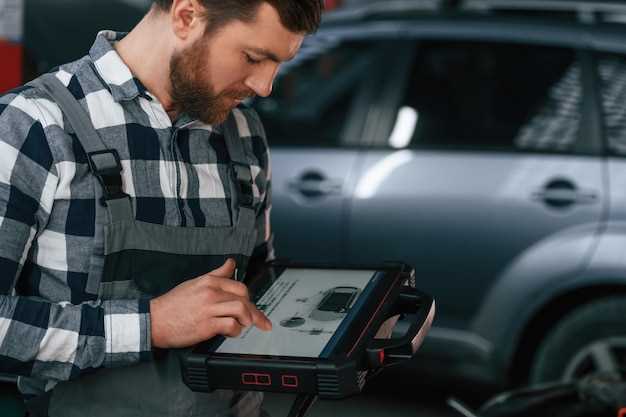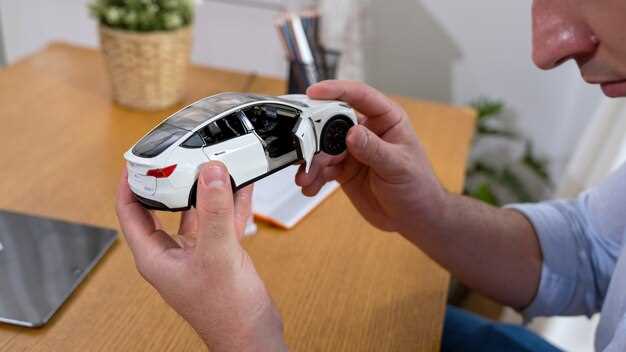Audi Collision Avoidance Systems – Everything You Need to Know

The modern automotive landscape has seen a significant shift towards enhanced safety technologies, and Audi stands at the forefront of this innovation. Collision avoidance systems are designed to assist the driver in preventing accidents, making vehicles safer and more secure. These advanced features utilize a combination of sensors, cameras, and artificial intelligence to detect potential hazards on the road.
Audi’s commitment to driver safety is evident in the range of collision avoidance technologies integrated into their vehicles. From Forward Collision Warning to Emergency Braking Assist, these systems provide crucial support, helping to mitigate the risk of collisions. When a potential impact is detected, the system alerts the driver and can even initiate automatic braking if necessary, ensuring a proactive approach to safety.
Understanding how these features work and their specific applications is essential for drivers looking to maximize the benefits of Audi’s safety systems. This guide will explore the various components and functionalities of Audi’s collision avoidance systems, highlighting how they work together to create a safer driving experience and reduce the likelihood of accidents on the road.
Understanding Audi’s Collision Assist Technology
Audi has developed advanced Collision Assist technology aimed at enhancing driver safety on the road. This system utilizes a combination of sensors and cameras to monitor the vehicle’s surroundings continuously. By analyzing traffic patterns and detecting potential hazards, the system is designed to prevent collisions and reduce the severity of accidents.
One key feature of Audi’s Collision Assist technology is its ability to identify vehicles and obstacles in the driver’s path. When a potential collision is detected, the system issues visual and auditory alerts, prompting the driver to take corrective action. If the driver does not respond in time, the system can automatically apply the brakes to mitigate the impact.
Another important aspect of Collision Assist is its integration with other safety systems in Audi vehicles. For instance, when used in conjunction with adaptive cruise control, the technology can adjust the vehicle’s speed to maintain a safe following distance. This synergy between systems not only enhances driver safety but also contributes to a more relaxed driving experience.
Audi’s commitment to safety is evident in its continuous improvements and updates to Collision Assist technology. By incorporating real-time data from both the vehicle and external sources, Audi aims to stay ahead of potential dangers on the road, ensuring that drivers and passengers enjoy a safer journey wherever they go.
Key Features of Audi’s Driver Safety Systems

Audi’s driver safety systems are designed to assist drivers in avoiding collisions and ensuring a safer driving experience. These advanced technologies leverage innovative engineering to enhance safety on the road. Below are some key features that define Audi’s commitment to driver and passenger safety:
-
Adaptive Cruise Control:
This system maintains a set speed while automatically adjusting to traffic conditions. It helps the driver by ensuring safe distances are kept from the vehicle ahead.
-
Traffic Jam Assistance:
In slow-moving traffic, this feature can take control of acceleration, braking, and steering, significantly reducing driver fatigue during long commutes.
-
Lane Departure Warning:
This system alerts the driver if the vehicle unintentionally drifts out of its lane, providing visual or audible warnings to help maintain safe positioning on the road.
-
Pre Sense Front:
Pre Sense Front employs sensors to detect potential collisions and can initiate emergency braking if the driver fails to respond in time, significantly reducing impact severity.
-
Rear Cross Traffic Alert:
This feature assists the driver in identifying vehicles approaching from the side when reversing out of parking spaces, enhancing safety in crowded environments.
-
Blind Spot Monitoring:
This system warns drivers of vehicles in their blind spots, helping to prevent accidents during lane changes by providing visual indicators.
-
360-Degree Camera System:
This feature gives drivers a bird’s-eye view of their surroundings, making it easier to navigate tight spaces and enhance awareness of nearby obstacles.
Audi’s focus on integrating these driver assistance technologies highlights their commitment to safety and the proactive support offered to drivers, ultimately promoting a safer driving environment.
How Audi’s Systems Detect Potential Collisions
Audi employs a comprehensive suite of advanced technologies designed to enhance safety and assist drivers in preventing potential collisions. These systems utilize a combination of sensors, cameras, and radar to monitor the vehicle’s surroundings and identify threats. Here are the primary methods through which Audi’s systems detect potential collisions:
- Radar Sensors: Placed in the front and rear of the vehicle, radar sensors continuously scan the area for obstacles. They can detect the speed and distance of nearby vehicles, providing crucial data for collision avoidance.
- Cameras: High-resolution cameras are integrated into the vehicle, usually mounted in the front, providing a wide field of view. These cameras can recognize traffic signs, lane markings, and pedestrians, significantly enhancing the vehicle’s situational awareness.
- Ultrasonic Sensors: Located around the vehicle, ultrasonic sensors assist in detecting objects that are close to the vehicle during low-speed maneuvers, such as parking or navigating tight spaces.
- Vehicle-to-Vehicle Communication: Some Audi models incorporate vehicle-to-vehicle communication technology that allows vehicles to exchange information about speed, direction, and potential hazards, further improving collision awareness.
- Data Fusion: Audi’s systems leverage data fusion techniques, integrating inputs from various sensors to create a comprehensive picture of the vehicle’s environment. This method enhances the accuracy of collision detection algorithms.
When a potential collision is detected, Audi’s systems can take preemptive actions to mitigate the danger. Features may include:
- Warning alerts for the driver through visual or auditory signals.
- Automatic braking assistance to reduce speed or come to a complete stop.
- Steering assistance to help navigate away from potential impacts.
By combining these technologies, Audi aims to provide a safer driving experience, assisting drivers in avoiding collisions and enhancing overall road safety.
Real-World Applications of Audi Collision Avoidance Features
Audi’s collision avoidance systems are designed to enhance the safety of both drivers and passengers. These advanced technologies provide crucial assistance during various driving scenarios, significantly reducing the likelihood of accidents.
One of the primary applications of these features is in urban environments, where the risk of collisions with pedestrians and other vehicles is heightened. Audi vehicles equipped with pedestrian detection can identify individuals crossing the road and automatically apply the brakes if the driver fails to react in time. This assistive capability not only helps avoid accidents but also promotes safer interactions between vehicles and pedestrians.
Moreover, on highways, Audi’s adaptive cruise control and lane-keeping assist technologies play a critical role in maintaining safe distances from other vehicles. By automatically adjusting speed and steering, these systems ensure that drivers remain in their lanes while minimizing potential collisions caused by sudden lane changes or tailgating.
The effectiveness of Audi’s collision avoidance systems is further enhanced by their integration with vehicle-to-vehicle (V2V) communication technology. This feature allows Audi cars to share real-time information about road hazards and traffic conditions, providing drivers with advanced warnings and enhancing overall road safety.
| Application | Feature | Benefit |
|---|---|---|
| Urban Driving | Pedestrian Detection | Reduces accidents involving pedestrians |
| Highway Driving | Adaptive Cruise Control | Maintains safe distances to avoid collisions |
| Intersections | Cross Traffic Assist | Detects oncoming traffic when reversing |
| General Safety | V2V Communication | Provides timely alerts about nearby hazards |
These real-world applications showcase how Audi’s collision avoidance technologies assist drivers in making safer decisions on the road. By prioritizing safety through innovation, Audi contributes to a future with fewer accidents and safer driving experiences for everyone.
Comparing Audi’s Safety Systems with Competitors

Audi is renowned for its innovative safety technologies designed to assist drivers in avoiding collisions. The brand’s suite of safety features, often referred to as Audi pre sense, includes systems that monitor the surroundings and provide alerts to prevent accidents. When compared to competitors like BMW and Mercedes-Benz, Audi showcases a blend of advanced assistance functionalities and user-centric design.
One standout feature of Audi’s safety system is the standard inclusion of adaptive cruise control, which not only helps maintain a safe distance from other vehicles but also adapitates to changing traffic conditions. In comparison, many competitors offer similar technologies, yet Audi’s implementation is often noted for its seamless integration and responsiveness, creating a more reassuring experience for the driver.
Audi’s lane departure warning and lane-keeping assist systems further enhance driver safety. These features actively monitor lane positioning and provide gentle steering assistance to keep the vehicle centered. While BMW and Mercedes-Benz offer competitive lane-keeping technologies, Audi’s systems have received acclaim for their precision and user-friendly alerts, ensuring the driver remains informed without being overwhelmed.
Another critical aspect is the advanced collision avoidance capability found in Audi vehicles. This system utilizes multiple sensors to detect possible obstacles and assists the driver by initiating automatic braking when necessary. In contrast, some competitors may rely heavily on driver intervention and lack the same level of proactive support. Audi’s approach exemplifies a commitment to not just alerting drivers but actively engaging with them to prevent accidents.
In terms of additional safety innovations, Audi integrates features such as night vision and intersection assistance, which provide an extra layer of security when navigating complex situations. While similar technologies can be found in vehicles from other luxury brands, Audi’s solutions are recognized for their clarity and effectiveness, enhancing overall driver confidence.
In summary, while many automotive brands are making strides in safety technologies, Audi stands out with its focus on comprehensive driver assistance systems. By prioritizing user experience and proactive measures, Audi continues to lead the charge in ensuring safety on the road.
Tips for Maximizing Safety with Audi’s Collision Technology
To fully benefit from Audi’s advanced collision avoidance systems, drivers should actively engage with the technology. Understanding how each feature operates can greatly enhance safety. Familiarize yourself with the Adaptive Cruise Control, which not only maintains speed but also adjusts to traffic flow, reducing the risk of rear-end collisions.
Utilize the Audi Pre Sense system, which provides alerts for potential hazards and can even initiate emergency braking. Ensure that this feature is always activated; regular checks will help confirm its status and responsiveness. Driver awareness is essential, as technology is meant to assist, not replace vigilance behind the wheel.
Keep your vehicle’s software updated to benefit from the latest enhancements and safety features. Audi frequently releases updates that improve system algorithms, ensuring optimal performance. Regular maintenance checks also play a vital role in ensuring that sensors and cameras are clean and functioning correctly.
Participate in training or informational sessions provided by Audi dealerships to better understand the full capabilities of your vehicle’s safety systems. This education fosters confidence in using assistive technology effectively, empowering drivers to make safer decisions on the road.
Lastly, it is important to remember that collision technology is a supplementary aid. Maintaining a defensive driving attitude and adhering to traffic laws should always come first. By combining professional driving practices with Audi’s innovative safety features, drivers can significantly enhance their safety and that of others on the road.



